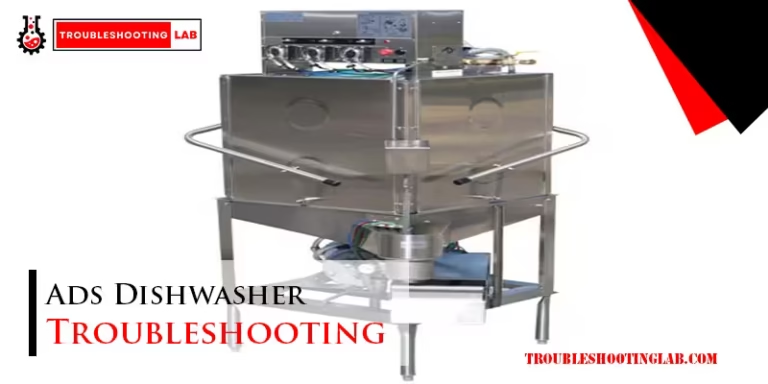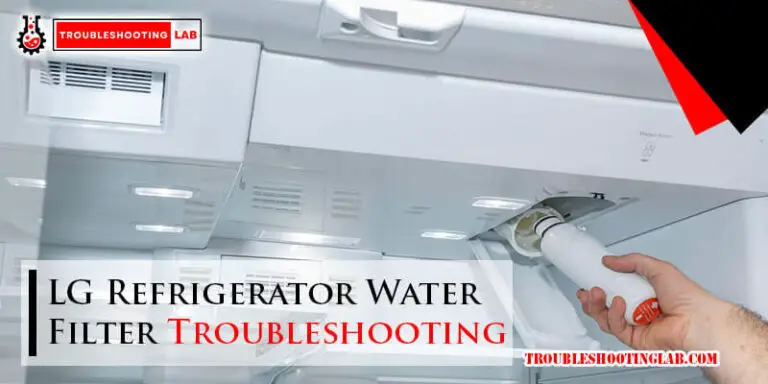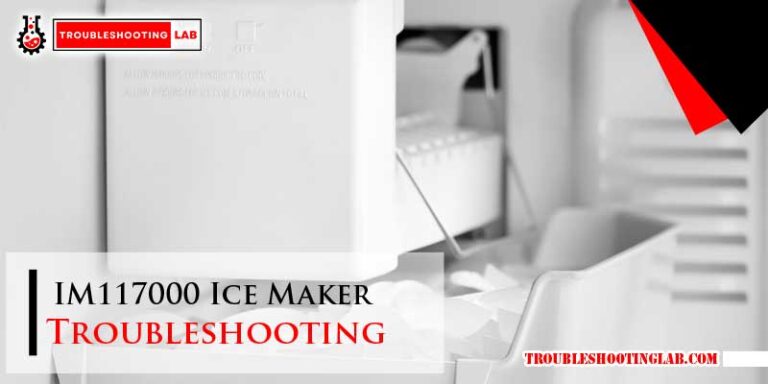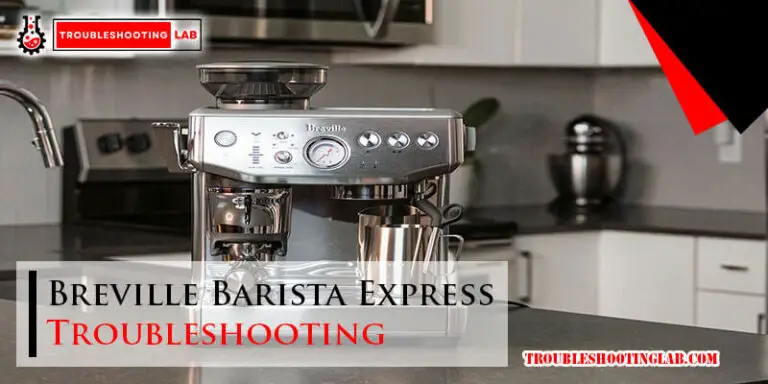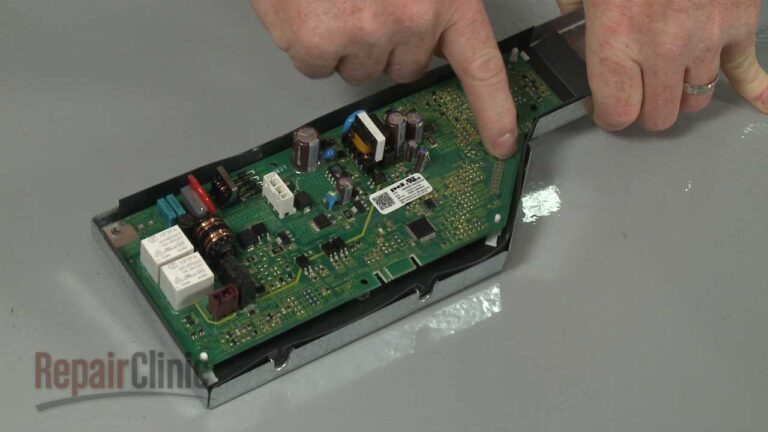Bosch Refrigerator Ice Maker Troubleshooting: Easy Fixes & Tips
Check if the Bosch refrigerator ice maker is turned on and the water supply is connected properly. Inspect and clean the ice maker components if necessary.Bosch refrigerators are known for their reliability, but occasional issues with the ice maker can occur. Troubleshooting common problems can save time and avoid unnecessary service calls. Ensure the ice maker is switched on and the water line is securely connected.
Blockages or debris in the ice maker can hinder performance. Regular cleaning and maintenance help maintain optimal functionality. Users often find that addressing these basic checks resolves the issue. If problems persist, consulting the user manual or contacting customer support is recommended. Simple troubleshooting steps can often restore your Bosch refrigerator ice maker to full operation.
Common Issues
Experiencing problems with your Bosch refrigerator ice maker? You’re not alone. Many users face common issues that can disrupt daily life. Below, we will explore two frequent problems: No Ice Production and Ice Maker Not Turning On.
No Ice Production
If your ice maker is not producing ice, several factors could be at play. Here are some common causes and solutions:
- Water Supply: Ensure the water supply line is connected and turned on.
- Water Filter: A clogged filter can restrict water flow. Replace it if needed.
- Ice Maker Arm: Check if the ice maker arm is in the down position.
- Temperature: The freezer temperature should be set between 0-5°F (-18 to -15°C).
Ice Maker Not Turning On
If your ice maker won’t turn on, you might need to troubleshoot the following:
- Power Supply: Make sure the refrigerator is plugged in and powered on.
- Control Panel: Check if the ice maker is turned on via the control panel.
- Door Switch: Ensure the freezer door is fully closed. The door switch must engage.
- Electrical Connections: Inspect for any loose or disconnected wires.
Addressing these common issues can often solve your ice maker problems. Regular maintenance is key to ensuring smooth operation.

Initial Checks
Experiencing issues with your Bosch refrigerator ice maker? Don’t worry. Begin with some initial checks to diagnose common problems. These simple steps often resolve most ice maker issues quickly.
Power Supply
First, ensure your refrigerator is receiving power. Check if the refrigerator light turns on when you open the door. If the light is off, the refrigerator might be unplugged or the circuit breaker could be tripped. Examine the power cord and plug to confirm they are secure.
If the refrigerator is plugged in but still not working, inspect the outlet by plugging in another appliance. If the outlet isn’t working, reset the circuit breaker or replace the fuse. These steps ensure your refrigerator has a steady power supply.
Water Supply
An ice maker needs a consistent water supply. Check the water line connected to your refrigerator. Ensure it’s not kinked or blocked. A kinked water line can restrict water flow and prevent the ice maker from functioning.
Next, inspect the water inlet valve. This valve controls the flow of water into the ice maker. If it’s clogged or defective, the ice maker won’t receive water. Replace the valve if necessary. Additionally, ensure the water filter is clean. A clogged filter can also restrict water flow.
Finally, check if the water pressure is adequate. Low water pressure can hinder the ice maker’s performance. Use a pressure gauge to measure the water pressure. It should be between 40 and 120 psi. If the pressure is low, consult a plumber.
| Check | Action |
|---|---|
| Power Supply | Ensure the refrigerator is plugged in and the outlet works. |
| Water Line | Check for kinks or blockages in the water line. |
| Water Inlet Valve | Inspect and replace if clogged or defective. |
| Water Filter | Ensure the filter is clean and replace if necessary. |
| Water Pressure | Measure and ensure it is between 40 and 120 psi. |
Inspecting The Ice Maker
Experiencing trouble with your Bosch refrigerator ice maker? The first step is to inspect the ice maker. This process involves checking the ice maker assembly and the ice tray condition. Follow these simple steps to troubleshoot and fix common issues.
Ice Maker Assembly
The ice maker assembly is the core component. It consists of various parts that work together to produce ice. Start by checking the power connection. Ensure the unit is plugged in securely.
Next, examine the water supply line. Make sure it is not kinked or blocked. A clear water line is essential for proper ice production. Inspect the water inlet valve. It should open and close properly. If it is faulty, consider replacing it.
Check the ice maker’s motor. Listen for any unusual sounds. A humming noise may indicate a problem. If the motor is defective, it may need servicing.
Ice Tray Condition
The ice tray is where the ice forms. Inspect the tray for any visible cracks or damages. A damaged tray can lead to leaks and irregular ice production.
Ensure the tray is clean. Remove any ice buildup or debris. A clean tray ensures smooth ice formation. Check if the tray is positioned correctly. Misalignment can cause issues with the ice dispensing mechanism.
Examine the ice ejector arm. It should move freely without any obstructions. If the arm is stuck, it may prevent ice from being dispensed.
| Component | Inspection Task |
|---|---|
| Power Connection | Ensure secure plug-in |
| Water Supply Line | Check for kinks or blocks |
| Water Inlet Valve | Open and close properly |
| Motor | Listen for unusual sounds |
| Ice Tray | Inspect for cracks |
| Ice Ejector Arm | Ensure free movement |
Resetting The Ice Maker
Is your Bosch refrigerator ice maker not working? The reset button might help. Resetting the ice maker can solve many issues quickly. Let’s find out how to reset it.
Reset Button Location
The reset button is inside the ice maker. Open the freezer door first. Look for the ice maker unit. You will see a small, red or yellow button. This is the reset button.
Reset Procedure
Here are the steps to reset the ice maker:
- Locate the reset button.
- Press and hold the button for 10 seconds.
- Release the button after 10 seconds.
- Wait for the ice maker to start again.
Check if the ice maker works after resetting.
| Step | Action |
|---|---|
| 1 | Locate the reset button. |
| 2 | Press and hold the button for 10 seconds. |
| 3 | Release the button. |
| 4 | Wait for the ice maker to restart. |
Still not working? You might need to check other parts. Check the water supply or inspect for ice blockages. Sometimes, a professional might be needed.
Cleaning The Ice Maker
Regularly cleaning the ice maker in your Bosch refrigerator ensures efficient performance. A clean ice maker produces fresh, tasty ice and prevents build-up that can cause malfunctions. Follow these steps to keep your ice maker in top condition.
Cleaning Tools
- Soft Cloth: For wiping surfaces without scratching.
- Warm Water: Helps dissolve and remove dirt.
- Mild Dish Soap: Safe and effective for cleaning.
- Soft Brush: Reaches tight spaces and scrubs away residue.
- Vinegar: Natural cleaner to eliminate odors and bacteria.
Step-by-step Cleaning
- Turn Off the Ice Maker: Switch off the ice maker and unplug the fridge.
- Remove Ice Bin: Take out the ice bin and empty it.
- Wash the Ice Bin: Use warm water and mild dish soap. Rinse thoroughly.
- Clean the Ice Maker Unit: Wipe down with a soft cloth and a vinegar solution.
- Scrub Stubborn Spots: Use a soft brush for tough residue.
- Dry All Parts: Ensure all components are dry before reassembling.
- Reassemble and Turn On: Put the ice bin back, plug in the fridge, and switch on the ice maker.
Proper cleaning extends the life of your Bosch refrigerator ice maker. It also ensures you get fresh, clean ice every time.
Fixing Water Supply Issues
Is your Bosch refrigerator ice maker not working? The problem might be with the water supply. Fixing water supply issues can be simple. Follow these steps to check and fix the problem.
Water Line Inspection
First, inspect the water line. Check if it is kinked or blocked. A kinked line stops water from reaching the ice maker.
- Unplug the refrigerator.
- Move the fridge to access the water line.
- Look for any kinks or bends.
- Gently straighten the line if needed.
- Make sure the water supply valve is open.
If the water line is damaged, you might need to replace it. Use a new, high-quality water line for best results.
Checking Water Filter
A clogged water filter can also stop water flow. Check the water filter for any clogs.
- Locate the water filter. It is usually inside the fridge.
- Turn off the water supply.
- Remove the old filter.
- Inspect it for dirt or clogs.
- Replace with a new filter if needed.
Make sure to use the correct filter type for your Bosch refrigerator. A clean filter ensures good water flow to the ice maker.
| Step | Action |
|---|---|
| 1 | Unplug the refrigerator |
| 2 | Inspect water line for kinks |
| 3 | Straighten or replace water line |
| 4 | Check and replace water filter |
| 5 | Ensure water supply valve is open |
Following these steps helps in fixing the water supply issues. This ensures your ice maker works properly.
Temperature Settings
A key factor in ensuring your Bosch refrigerator ice maker works well is the temperature settings. Incorrect settings can lead to problems. Let’s explore how to set the temperature correctly.
Optimal Freezer Temperature
The optimal freezer temperature is crucial for ice production. The ideal setting for a Bosch refrigerator is 0°F (-18°C). This ensures ice forms efficiently without affecting other stored items.
Setting the freezer temperature higher than 0°F might slow down ice production. If set too low, it can cause freezer burn. Always use a reliable thermometer to check the temperature.
Adjusting Settings
Adjusting the temperature settings on a Bosch refrigerator is simple. Follow these steps to ensure your ice maker performs its best.
- Open the refrigerator door.
- Locate the temperature control panel.
- Press the Freezer button to adjust the temperature.
- Set the temperature to 0°F (-18°C).
- Wait 24 hours for the new setting to take effect.
If the ice maker still isn’t working, check for other issues. Ensure the door seals properly. Also, make sure the ice maker is not blocked by food items.
| Problem | Possible Cause | Solution |
|---|---|---|
| No Ice Production | Temperature too high | Set to 0°F (-18°C) |
| Ice Cubes Too Small | Temperature fluctuating | Check door seals |
| Ice Maker Stuck | Blocked by food | Clear the obstruction |
When To Seek Professional Help
Sometimes, fixing a Bosch refrigerator ice maker can be tricky. Knowing when to call a professional can save time and money. This section will help you decide when to seek expert help.
Identifying Complex Problems
Simple issues are often easy to fix. But some problems need expert attention. Here are signs that you need a technician:
- Water Leaks: If water is leaking, call a pro.
- Electrical Issues: Sparks or power problems are dangerous.
- Strange Noises: Loud or unusual sounds need expert help.
- Ice Maker Not Working: If the ice maker stops, it may need a pro.
If you see any of these signs, don’t try to fix it yourself.
Finding A Technician
Finding the right technician is important. Here are steps to find one:
- Search online for local technicians.
- Read reviews to see what others think.
- Ask friends or family for recommendations.
- Check credentials to ensure they are qualified.
- Get quotes to compare prices.
Choosing the right technician ensures your fridge gets fixed correctly.
| Problem | Signs | Action |
|---|---|---|
| Water Leaks | Pooling water around fridge | Call a professional |
| Electrical Issues | Sparks, flickering lights | Call a professional |
| Strange Noises | Loud, unusual sounds | Call a professional |
| Ice Maker Not Working | No ice production | Call a professional |
Frequently Asked Questions
How Do You Reset A Bosch Ice Maker?
To reset a Bosch ice maker, unplug the unit for 30 seconds. Plug it back in and press the reset button.
Why Did My Bosch Refrigerator Stop Making Ice?
Your Bosch refrigerator may stop making ice due to a clogged water filter, faulty ice maker, or low water pressure.
How Do You Self Test A Bosch Ice Maker?
To self-test a Bosch ice maker, press and hold the “Test” button for about 5 seconds. The ice maker will start a cycle. Check for any error codes displayed.
Why Won’t My Bosch Refrigerator Dispense Ice?
Your Bosch refrigerator may not dispense ice due to a clogged ice maker, faulty water filter, or blocked dispenser chute. Check for ice jams.
Why Is My Bosch Ice Maker Not Working?
Check if the ice maker is turned on and properly connected to the water supply.
Conclusion
Fixing your Bosch refrigerator ice maker doesn’t have to be daunting. With these troubleshooting tips, you can solve common issues easily. Ensure regular maintenance for optimal performance. A well-maintained ice maker provides consistent ice supply, enhancing your kitchen experience. Keep these steps in mind for a hassle-free, efficient appliance.

